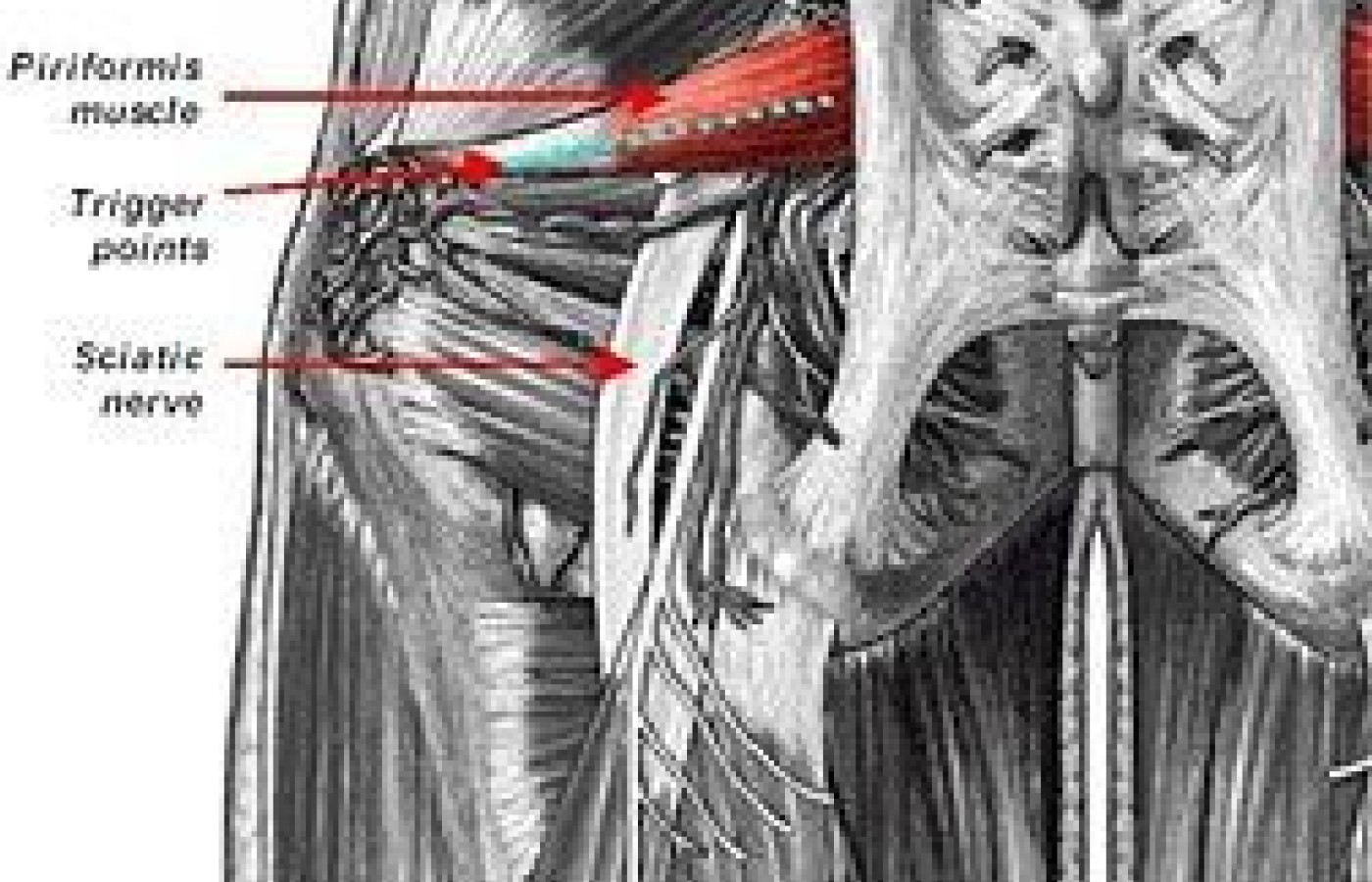One of the longest nerves in the body is known as the vagus nerve (VN). The VN is the 10th pair of cranial nerves that originates at the brain stem in the medulla oblongata. This nerve is part of the parasympathetic nervous system, which is a part of the ANS. Research suggests ear acupuncture can activate the VN.
Treatment of Piriformis Syndrome Pain
Some of the cases termed "lower back pain" are in reality piriformis syndrome. In piroformis syndrome, the piriformis muscle gets tight (due to overstretching, trauma, prolonged bad posture, etc.) and compresses the sciatic nerve, producing numbness and pain going down the thigh and calf (UB channel). If the compression is on the inferior gluteal nerve (a branch of the sciatic nerve), the pain will be in the buttock (local symptoms).
When the initial examination takes place, it is very common to see the patient leaning toward the other side (when sitting or standing) in order to reduce the compression of the sciatic nerve. The great majority of these patients are taking medications - for example, 800 milligrams of ibuprofen (Motrin) three times a day, or 500 milligrams of naproxen two times a day - with little or no improvement.
The examination of the affected area begins with moderate digital palpation of GB 30 and moves toward the midline. A series of trigger points will be discovered that, when palpated, will produce local and/or referred pain (referred pain/tingling toward the buttock and/or leg [UB channel]).

Technique used: Chinese acupuncture needles (gauge #36), 1.5-2 inches long.
Micro-current device: Acutron Mentor, biphasic milliamp pads, with milliamp stimulation for 20 minutes (milliamp stimulation is maintained as a noticeable, mild tingling sensation). A second stage follows: a cooling period of five minutes (microamp stimulation, biphasic, 75-100 micro-amps).
Treatment points: GB 30 is connected to 2-4 trigger areas on top of the piriformis muscle.
The treatment frequency is 1-3 times a week (depending on the pain level) for 4-6 weeks. The acupuncture needles are inserted with the stimulation pads on top of the needles (the pads used are Zimmer, single use).
Within 6-8 treatments, the patient is able to feel improvement: pain/burning and tingling is reduced; the range of motion of the hip is increased; and pain medication reduced or discontinued.
As in almost all muscle disorders, the indication of the appropriate stretching exercises for the muscles involved will assist in a speedy recovery. A course of daily stretching exercises is recommended (part of the protocol) to patients to assist in recovery of the muscles and tendons. Targeting the piriformis is done with a single knee to the chest with painful side cross-over. The stretching exercises are performed three times a day, five times each time, maintaining the stretch between 5-10 seconds. It is convenient to apply heat for 15 to 20 minutes before the stretching exercises are done in order to increase the elasticity of the muscle, and ice for five minutes afterward in order to reduce the inflammation produced by the stretching exercises.
Other treatments: Posture training is another pillar of patient rehabilitation. In some cases, a cortisone injection is administered locally to reduce the inflammation and edema of the muscle. Surgery is another resource (although rarely used): it "cleans up" the fibrotic muscle.
If you have any questions about the treatment described in this article, please contact me at the address below.



